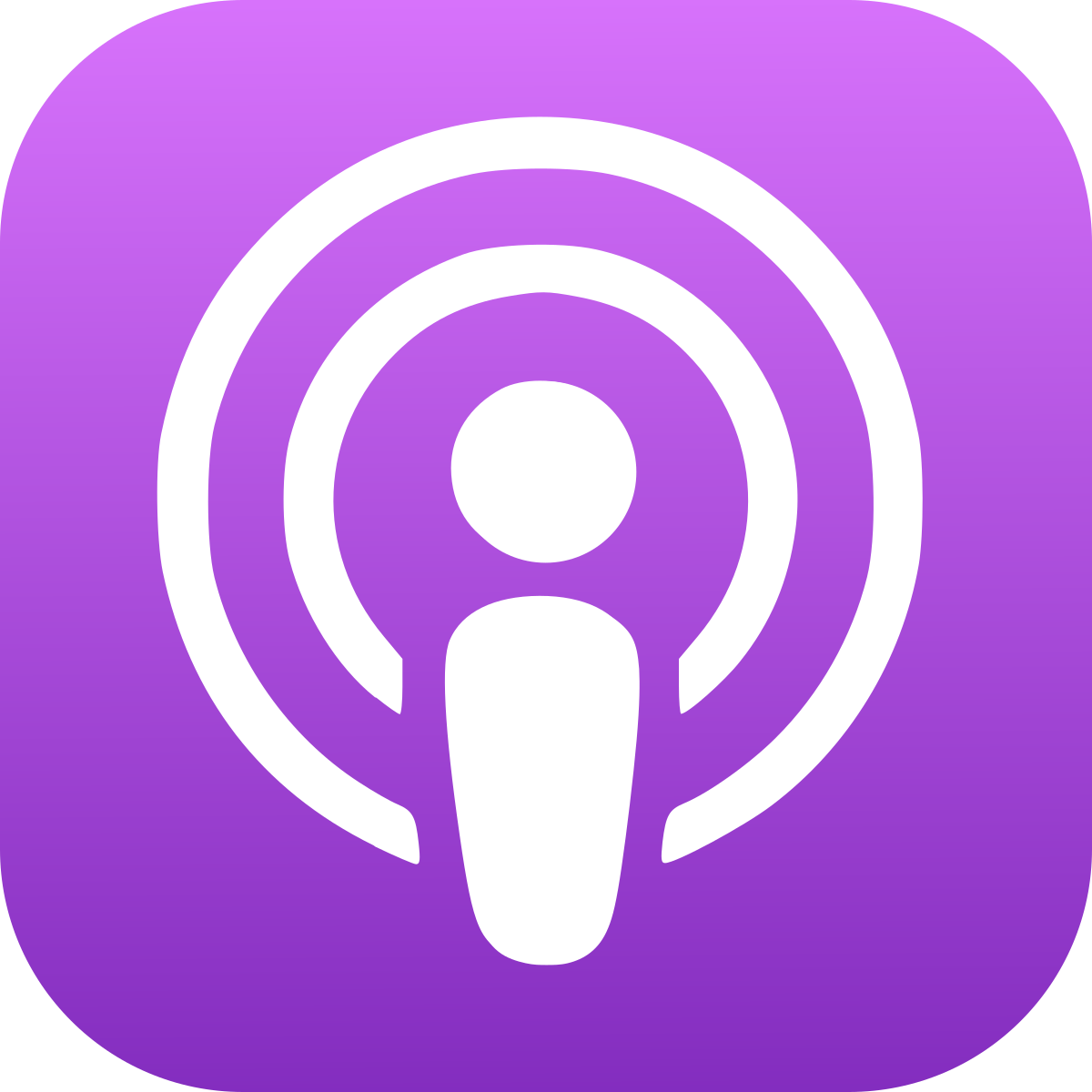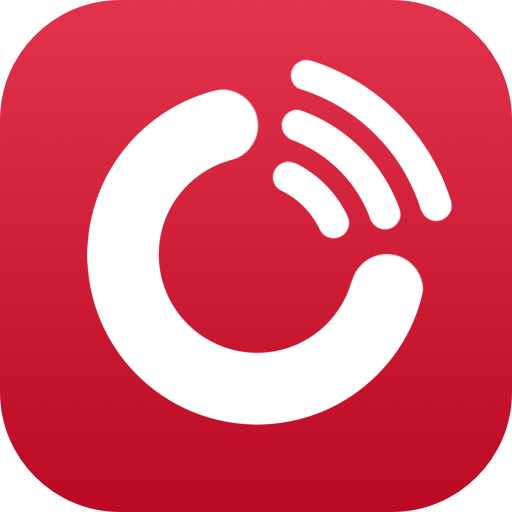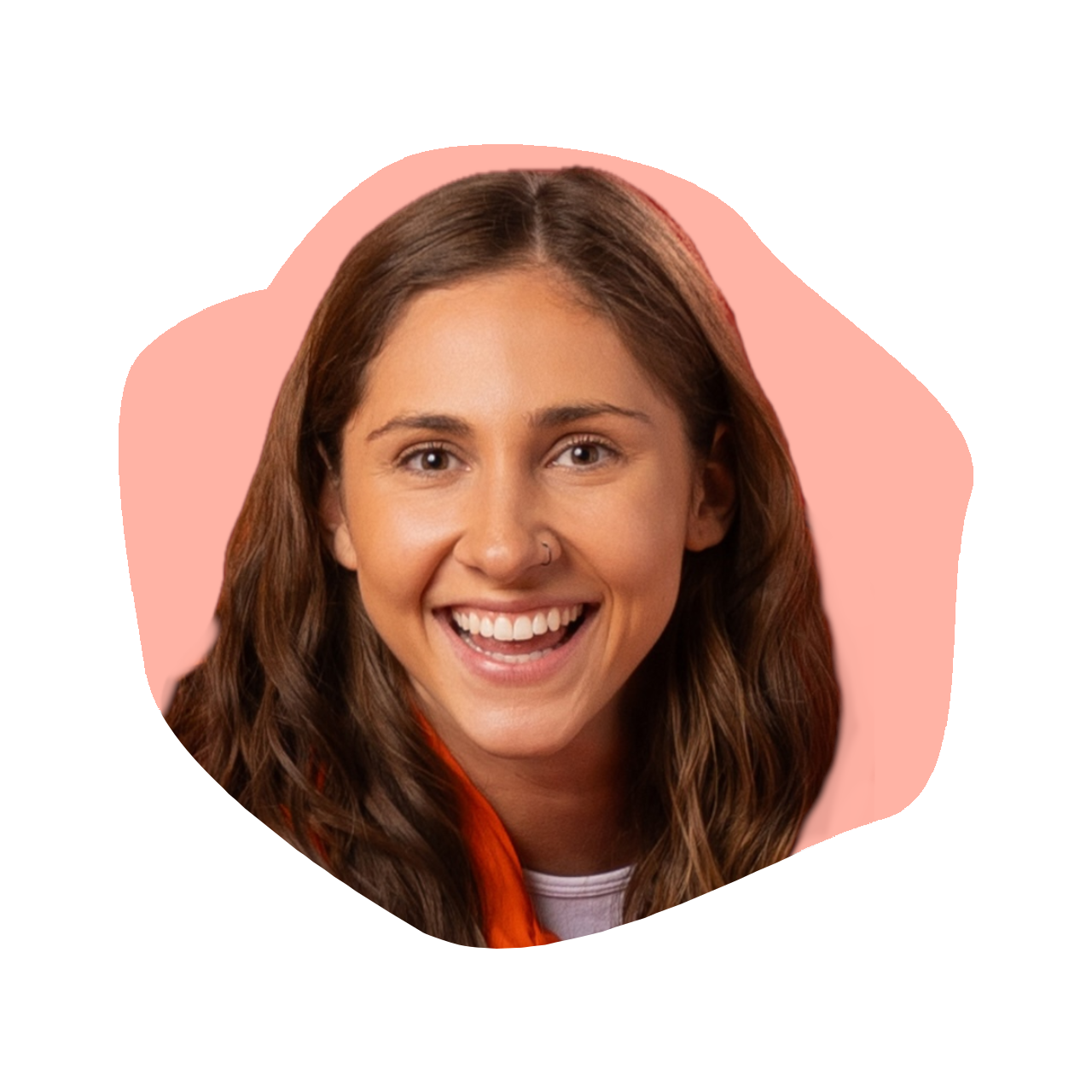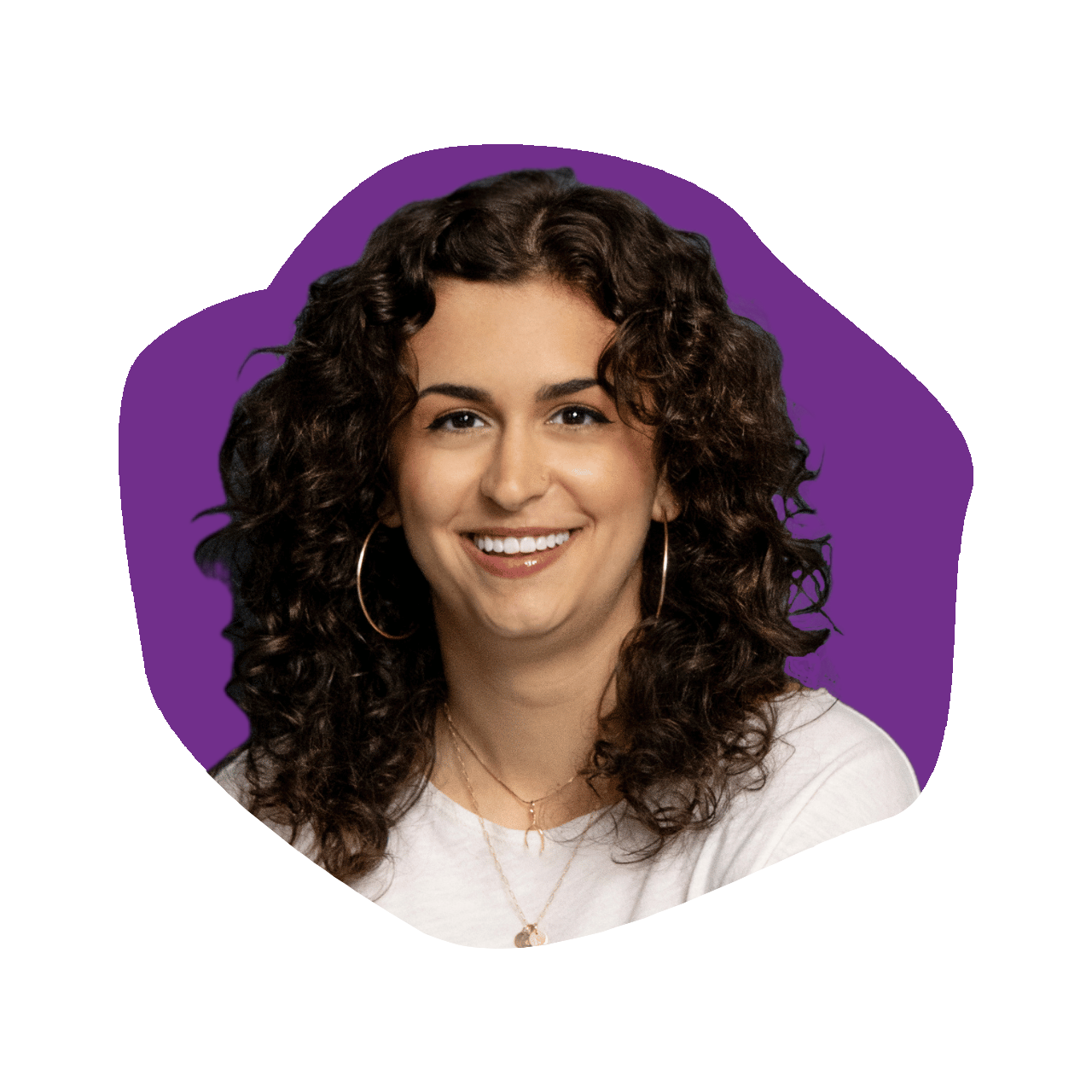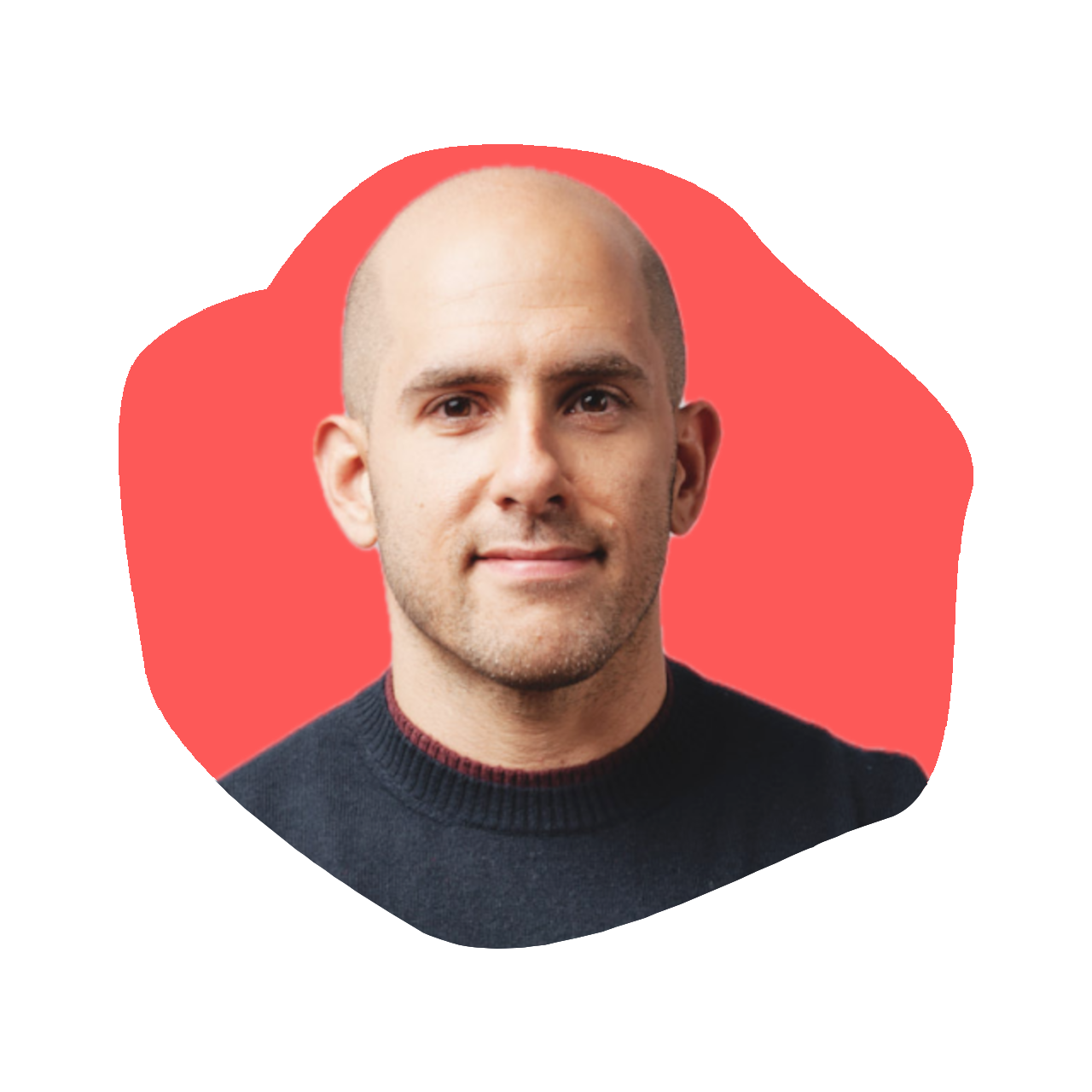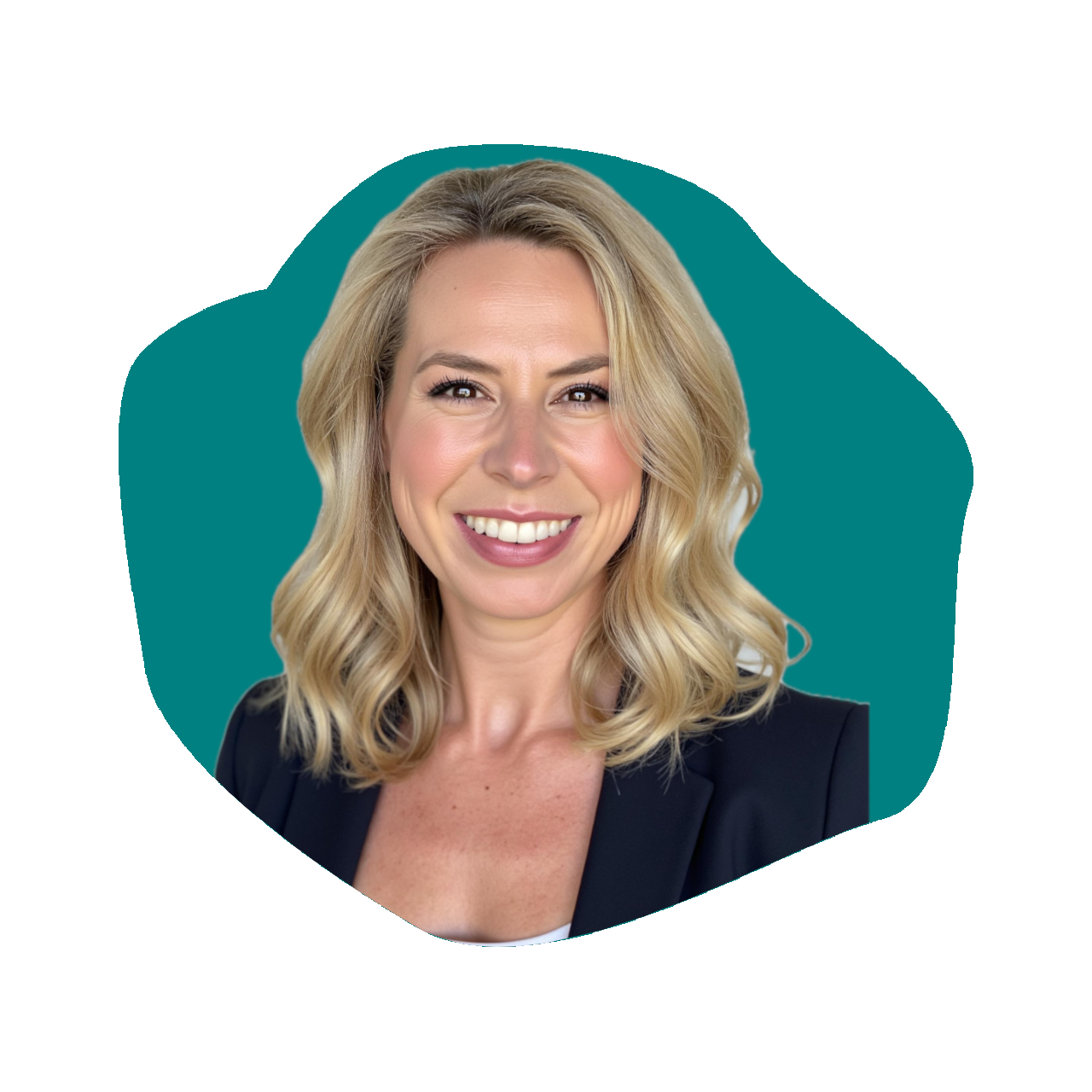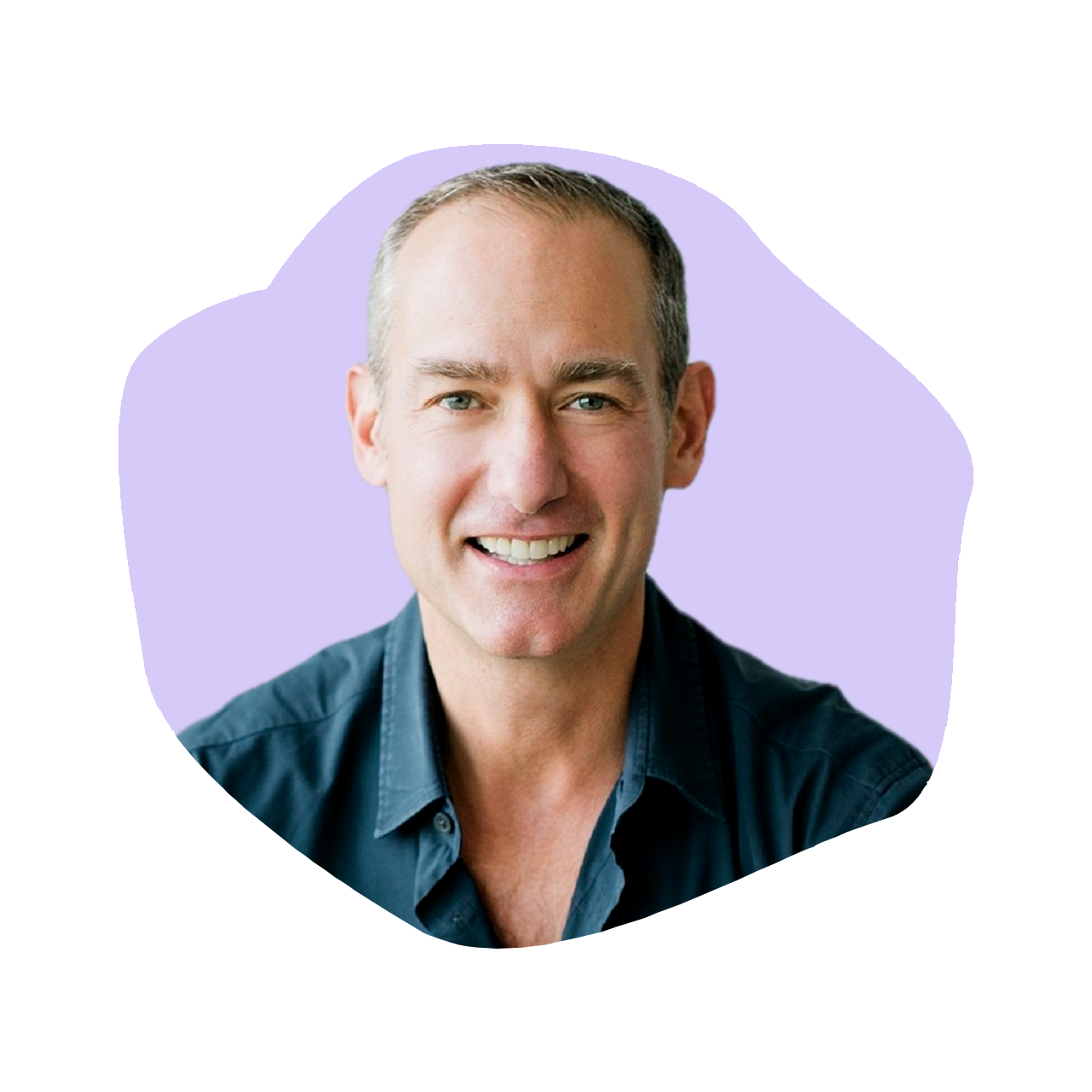Samantha Diamond: Founder & CEO of Bird&Be
Episode 757
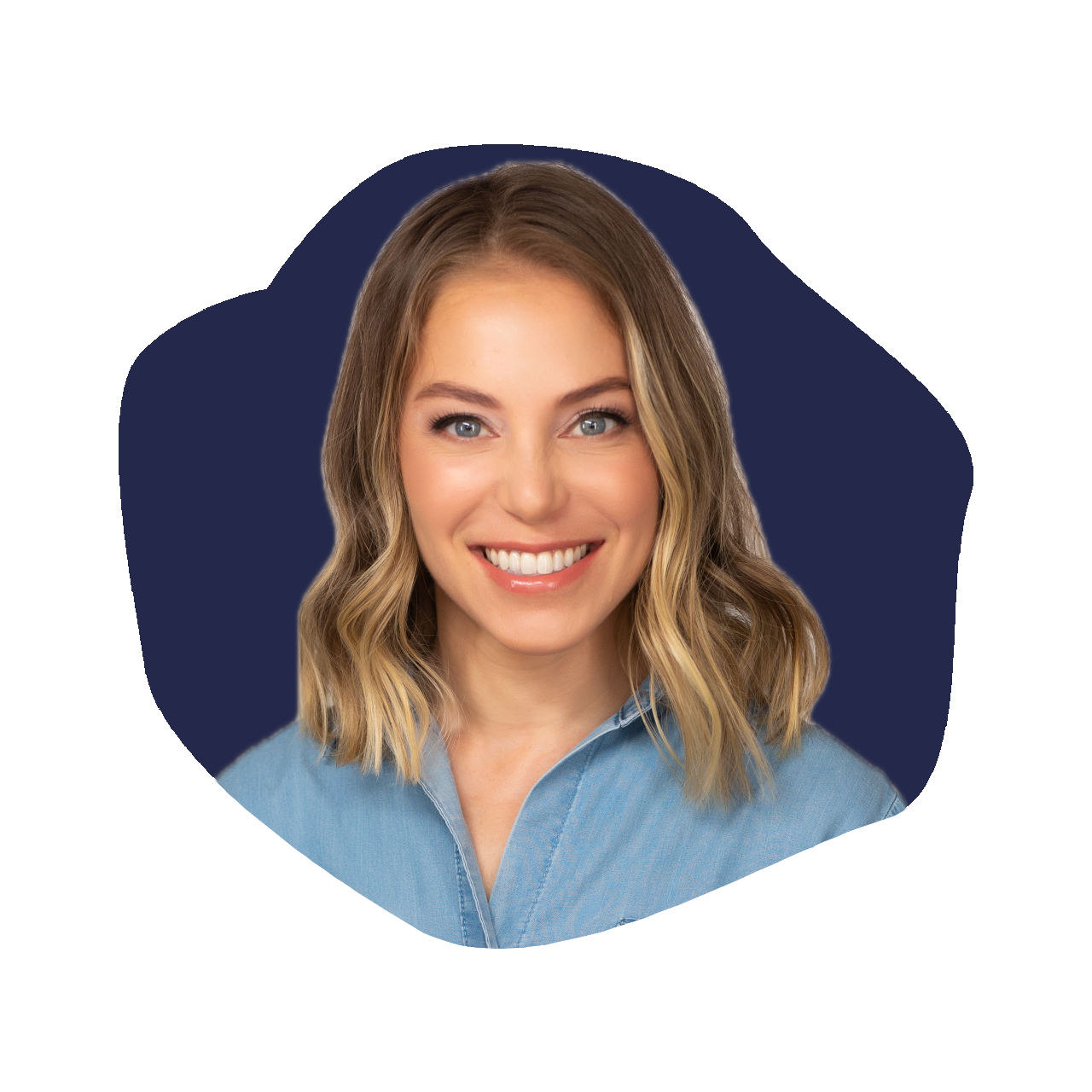
On today’s episode, we welcome Samantha Diamond, Founder and CEO of Bird&Be, the modern fertility brand making evidence-backed, inclusive care accessible to both women and men. After facing her own experiences with PCOS and pregnancy loss, Samantha set out to disrupt a dated, gendered industry — creating a brand that merges science, empathy, and accessibility.
Hear how Samantha scaled Bird&Be into an eight-figure, subscription-first business that’s redefining access to fertility care — including reaching thousands of customers in fertility “deserts” across the country. This fall, Bird&Be is expanding into 300+ Ulta Beauty stores, becoming the first fertility brand to bring male-focused products to the beauty aisle.
In this episode, Samantha opens up about how her personal journey inspired Bird&Be, what it takes to build trust in such a sensitive and science-driven category, and how the brand is cutting through misinformation with evidence-based innovation. We also dive into her lessons in leadership, the power of reaching underserved communities, and what’s next as Bird&Be continues to reshape reproductive health for all.
This episode is packed with insights for founders, innovators, and anyone passionate about women’s health, inclusion, and creating change in industries that need it most. Don’t miss it!
Resources from
this episode:
Enjoying this episode of #TheKaraGoldinShow? Let Kara know by clicking on the links below and sending her a quick shout-out on social!
Follow Kara on LinkedIn – Instagram – X – Facebook – TikTok – YouTube – Threads
Have a question for Kara about one of our episodes? Reach out to Kara directly at [email protected]
To learn more about Samantha Diamond and Bird&Be:
https://www.birdandbe.com/
https://www.instagram.com/birdbeco
https://www.linkedin.com/company/birdandbe
Transcript
Kara Goldin 0:00
I am unwilling to give up, that I will start over from scratch as many times as it takes to get where I want to be. I want to be you. Just want to make sure you will get knocked down. But just make sure you don’t get knocked out, knocked out. So your only choice should be go focus on what you can control. Control, control. Hi everyone, and welcome to the Kara Goldin show. Join me each week for inspiring conversations with some of the world’s greatest leaders. We’ll talk with founders, entrepreneurs, CEOs and really, some of the most interesting people of our time. Can’t wait to get started. Let’s go. Let’s go. Hi everyone, and welcome back to the Kara Goldin Show. Today. I’m joined by Samantha diamond, who also goes by the name, the nickname Sam, so you’ll hear me calling her Sam, but founder and CEO of Bird&Be, the modern fertility brand, making evidence backed inclusive care accessible to both women and men. After navigating her own experiences with PCOS and pregnancy loss, Samantha set out to disrupt a dated, gendered industry, and she’s done just that, drawing on her background as the founder of a very successful PR agency. She’s built Bird&Be into an eight figure subscription, first business in just three years. So the brand has shipped over 40,000 orders nationwide, many to fertility deserts, and this fall, Bird&Be, as we speak, I should say, is launching and 300 plus Ulta Beauty stores, so excited for Sam and everybody to get their hands on this incredible product, so becoming the first fertility brand to bring male focused products into the beauty aisle. So it’s very exciting. I can’t wait to dive into the whole story and how taking a personal experience to building one of the most innovative and inclusive brands out there, redefining reproductive health is, how does she do it? So Samantha, Sam Welcome to the show. Super excited
Samantha Diamond 2:17
you’re here. Thank you for having me. I’m very excited to be here. Very, very
Kara Goldin 2:21
excited. So let’s start with the brand. What is burden bee and how is it different from everything else in the fertility and reproductive health space?
Samantha Diamond 2:32
Well, burden bee is a brand that powers your fertility journey through tools and products that have been created by fertility doctors, the doctors whose sole job it is to get people pregnant.
Kara Goldin 2:46
I love it. It’s nice and condensed. I love the messaging. So you’ve been very open about your personal experiences with PCOS, pregnancy loss and infertility. Many people have have heard it, but some of us that are listening have not. So I’d love it if you could share a little bit more about how those your own personal experience shaped your decision to launch Bird&Be
Samantha Diamond 3:13
Yeah, absolutely I was. I was running my PR agency back in the mid 2010s and I was growing my family, and I was struggling. I experienced pregnancy loss, and I had been diagnosed with PCOS, and I was kind of navigating my fertility journey while growing this business, and the work I was doing every day was in the beauty space. It was in marketing communications in CPG and beauty, and it struck me that the products that I was working with and the brands that I was working with, it was it was so clear to women how to use them and what they needed for their skin care and what they needed for their hair care and their makeup. But reproductive health, something that we all are navigating, was completely unclear and it and I felt that it should be a subject that was as clear as the beauty products that we were using every day. And so I set up. I set off on a journey to make it easier for people to navigate their reproductive health journey, fertility journey. And my goal was for no one to arrive at the fertility clinic and say, I wish I would have known sooner.
Kara Goldin 4:37
I love, love that story. I mean, it’s, it’s being able to really look at really challenging times and figure out, like, how do I actually make this better for myself? And once you see it working, you want to bring it to other people. It’s sort of a common story amongst great founders, so I love hearing that. I when you think back on Well, first of all, what is PCOS? For those who might not be familiar with that,
Samantha Diamond 5:07
so PCOS is polycystic ovarian syndrome. It’s kind of a misleading name, because it implies that you would have polycystic ovaries, meaning lots of little cysts on your ovaries. And that’s not always the case. It is a metabolic condition. It impacts somewhere between 10 to 20% of women. Most women are actually they go undiagnosed, either permanently or for a very extended period of time, and it’s actually contributes to issues with ovulation as one of the symptoms, meaning it is one of the top, if not the top, reason that people struggle with trying to conceive and with pregnancy, it also can manifest with other symptoms. Some people struggle with high androgen levels, meaning they get hair growth on their face, hair loss on their head. Of course, we get all of the most wonderful symptoms. They struggle with insulin resistance and weight gain. They can also struggle with other things like mood and so it’s it’s a very complex syndrome. It is not something that is curable, but it is able to be managed.
Kara Goldin 6:28
So when you were going through this, this time, you know how, how challenging it is to try and, you know, figure out, how do you actually make yourself better? What were like the first steps that you went through when you also were realizing that it there’s, it’s not easy, right? It’s not easy for people to figure out exactly what they do need. No.
Samantha Diamond 6:55
And I was very, very lucky, because at the time, I had started going through this process and then ended up moving into fertility treatment. My partner, my husband, was a fertility doctor, and I had this resource living with me in my home, and I still felt like I wasn’t getting the full picture of integrative care, and that’s when my clinic had referred me to see a fertility focused naturopath. So I was getting the reproductive endocrinology the western medicine, and they said it might be time for you to also see a fertility focused naturopath who can help you manage some of the other symptoms, very specifically around the PCOS. And that’s where I actually met one of our co founders, who was the naturopath who was treating me at the time, and learned that certain supplements, and in the case of PCOS, it’s a supplement called inositol, these are very potent nutrients and agents, and they are not benign, they have a very clear clinical impact. And for me, being on the correct dose of inositol and other supplements actually regulated my cycle without medication. And so to this day, I am finished and completed. My beautiful family. I still have PCOS, but I do not need to be on medication, because I’m able to take the inositol that we created at Burton B now, and I have a completely regular cycle.
Kara Goldin 8:32
That’s awesome. So what do you recommend for people? Like, how do they know that they need your products? I guess, is like, what is that first step and and is it only for people who are going through fertility as well?
Samantha Diamond 8:45
Great question. So alongside the supplements, we also developed a suite of at home tests. And these tests are often a first step. We call them our red flag screeners. These tests are opportunities for folks, male and female, to be able to test certain markers at home, flag if there is an issue, and then they’ll know they’re not waiting a year of trying to conceive, because that’s a public health messaging. Try to conceive for a year and go see your doctor. In many cases, you should not be waiting a year. And these tests can show you some of the markers that would indicate it’s it’s time to go quicker. So one of the tests that we’ve developed is called an ovarian reserve screening test. It measures a marker called FSH, the follicle stimulating hormone the very beginning of your menstrual cycle. This is the hormone that peaks. It goes, it goes pretty high. So you’re going to measure that on a p test, similar to a pregnancy test, measure it on a p test at home, and it’s going to show you a range of how high your FSH is. So and for us, we we mark that indicator at a. 10, so you’ll see on the test, you match your color with the number. If you’re over 10, it doesn’t necessarily mean you’re going to struggle to get pregnant, but it means it’s time to see your doctor, because that doctor is going to do a full fertility workup and help counsel you to figure out what your next steps might be. Similar story with an at home sperm test. We have the coolest at home sperm test, I like to say, for women, often getting tests is, you know, it’s complicated and can be stressful. For males, this is a pleasurable test. It is easy and pleasurable to test your sperm. We do it in a way where they can do it at home, so you’re not under the pressure of going to a clinic and sitting in one of those collection rooms and having to kind of perform on the spot, this is something you can do at home. It will give you your results at home in 15 minutes on your phone, and you’ll know immediately if it’s time to see a doctor. So those are two examples. We also have ovulation tests, which is one of the indicators of PCOS, if you are getting if you are not ovulating, if you’re having irregular cycles, if your tests aren’t showing that ovulation peak, do not wait it’s time to see a doctor.
Kara Goldin 11:12
That’s That’s awesome. So when you started, when you started burden B, you know you, you saw the problem. You felt like there was, there was a business here, but you hadn’t been in in this business before. Right? Significantly different from running a successful starting and running a successful PR agency, also a business, but to something that I would imagine, not only do you have products, but it’s health care, it’s it’s a service you need, customer service. I mean, this is a big deal. This is a big undertaking. I guess you’re lucky that you’re married to somebody who sort of understood the topic a bit, but still, it’s, it’s, it’s scary, like, how did you get the courage to actually say, You know what, I need to go do this?
Samantha Diamond 12:11
Well, I always like to say that ready is not a feeling, it’s a decision. So you decide to go, and that’s what I did. I made the decision that I was so passionate about helping other people to avoid the journey that I had been on, and helping to educate earlier, and making sure that folks had access to some of the products that I had to navigate my way through to get access to that I couldn’t not do this. And I think another benefit, perhaps, was that I was a little bit naive when I started a physical product business. I went from a service business thinking, I know I know how to sell a product. I can do this. And selling a physical product is a very different story, as you mentioned, selling a regulated, physical product is a whole other beast, and I’m not sure if your listeners know, but to sell a supplement in Canada is very different from selling a supplement in the US. And so we are a Canadian based company. We sell our products across Canada, in the US and some international markets as well. But to sell and create a supplement in Canada, you actually need a license from Health Canada, which is our FDA equivalent, so you cannot go to market without a license that has pre approved your product, pre approved the formula and the claims that you’re making around your product. So it is a very, very involved process, and it also regulates the way you make it, the factory in which you’re making it, the testing that’s required and the long term data that you must collect on the product. So this is a very, very intensive area when it comes to regulatory and I had to surround myself with the people who knew what they were doing.
Kara Goldin 14:11
So did you launch it in the US at the same time as Canada? Or did you launch it first in Canada? And wait a bit.
Samantha Diamond 14:22
No, we launched everything at the same time, and in those early days, like talk about early founder struggle days, we were actually making everything in one spot here locally in Canada, and we were shipping every single day across the border to customers in the US, package by package by package. Our DHL and FedEx bills were astronomical. We did figure out how to scale up manufacturing, and we have since started warehousing in the US. But those early days, you know, we were we were sometimes driving cars. Loads of orders to FedEx to make sure that they got there on time, because we knew how important it was for our customers to receive their products.
Kara Goldin 15:10
So you launched with how many SKUs from from the start, we
Samantha Diamond 15:16
launched with four. Actually, we launched with six core of the supplement skews. We actually launched with tests about four months later. We intended to launch with tests at the same time, but we launched during covid and every manufacturer in the world at the time that made at home tests were making covid tests, so we just couldn’t get them made in time. So we ended up launching with the supplements first. And we launched with male and female fertility product. We launched with a male and female daily product, which our female version was the pregnancy product, and the male was just a base male daily and we launched with our gentle products as well. For women who are really, really struggling with nausea in early pregnancy and just can’t keep anything down, they needed something super, super light and easy to digest.
Kara Goldin 16:13
So many companies that have launched and focused on fertility are really focusing on the woman, but you intentionally are inclusive of men as well. Why was this so important to you, especially from the get go or somebody might launch a brand just focused on one gender and but I love that you just went all in and said, Let’s do this.
Samantha Diamond 16:41
Well, I think the answer is twofold. We went in to this space wanting to actually change the conversation around fertility when I was going through my own journey, and this is very similar for a lot of the team members who now work with us, there was still an element of stigma, shame and isolation around it, and in order to change the conversation, we need to bring in everyone involved. So the stats that that you know we we shared with our first investors back in 2020, are still the same. Stats today, up to 50% of infertility cases involve a male factor. Male factor infertility was the number one reason the past two years that people in Canada sought IVF, and it’s the number two reason in the US behind egg and embryo freezing. So it is a very, important topic to tackle. And the positive side of this is that male factor infertility is often impacted by lifestyle and can be corrected very a lot easier than you can correct some of the issues that relate to female infertility, and you can do them quickly. And so we wanted to change the conversation. In order to do that, we need to involve the male partner, and we need to actually have an impact on outcomes. And that has to involve the male partner. An embryo is half sperm half egg. It doesn’t matter what the family itself looks like. There is always going to be a sperm involved in creating that embryo and the health of the embryo, and now there’s a lot more data every year. Fertility is very exciting, because every year there’s more and more and more studies and data, because it’s such a new space. But the data is showing that the health of the embryo at the time of conception actually has an impact on the health of the offspring. So it’s very important that both sides of the equation are at absolute optimal peak health during that period of time.
Kara Goldin 18:50
So burden B is A. It’s grown into an eight figure subscription, first business in just over three years, what have been the biggest drivers of that growth is, I mean, it’s, it’s incredible what what you’ve done and and the success that you’ve seen. So can you talk a little bit about what has what do you think is that is the key to being able to have a successful subscription business these days.
Samantha Diamond 19:21
I think there’s a variety of keys. One of them is science. It’s great to have a lot more companies in this space, because that’s, you know, it’s helpful to the conversation. It’s helpful to destigmatizing it at the next layer, is actually showing that the product has an impact, and therefore the customer continues to come back because there is an actual impact. So we have done two studies as of today on our male products. We were able to publish that data to show that the male products actually do have a clinical impact on sperm health. And because of that. We are also now being sold in hundreds of fertility clinics, and both on the REI the reproductive endocrinology side as well as the natural health side. And that’s a testament to the data. Is a testament to how patients actually are performing in clinic. They can track their improvement. It’s a testament to outcomes and how people who are subscribed to our vitamins are sharing with their own communities that they have had successful outcomes. But I think we talk about clinical impact in a way that perhaps for the everyday consumer is maybe unclear. So we have companies in this, in our space, who are doing, who are making great strides in testing, they’re testing their customers on a before and after basis for the level of vitamins in their bloodstream. And that’s great. You want to see that? You know, you started with nothing, you added something, you have more of that vitamin in your bloodstream, we’ve taken it that step further. It’s not only more in the bloodstream, but we’ve shown that you have an impact on your health outcomes. And so that’s why, one of the reasons why I think we’ve grown so quickly is we’ve been able to expand through clinics, and people are seeing real results. I think another element is how we’ve built we’ve built this company with empathy as a key growth strategy for us, down to the way our product is designed, to the product names. We’ve tried to make this something that is accessible and modernized. We don’t show pictures of baby bumps because we know a lot of people are struggling. That was one of the key things when we when we first started, I walked up and down the drugstore aisles and saw, you know, ovulation test kits and prenatal vitamins, and all of them had, like a woman with a baby on her hip or a big bump. And for me, as somebody who was struggling with pregnancy loss, that was just an unnecessary trigger. My counter was already full of all of the products like I didn’t need to see multiple boxes showing me that I was not yet there. That’s just additional pressure.
Kara Goldin 22:13
Yeah, that’s, that’s a really, really good point. So I think it’s, it’s, you know, the the packaging, I think, in in so many products, is just, it seems so off, and you guys just, I think, really, really nailed it. So it’s you guys have done such a great job. So burden be is now entering 300 plus Ulta Beauty stores. Such a huge milestone. Very excited for you. How did that partnership come together? I mean, it’s, it’s so unique. Can you talk about it?
Samantha Diamond 22:46
Yes, so the long story, which I will not make a long story. I’m going to, I mean, a long story short, on our very first investor hitch deck, we had this big picture of the current drugstore aisle, and then we had pictures of what we envisioned a drugstore aisle to look like that had none of these triggering images, and had very clear education with male and female products together. And we were asked in those very early discussions, would you go into retail? What are your thoughts? And I always said, I I will go into retail when it’s a partner who is slightly disruptive, so not a typical pharmacy to start a slightly disruptive partner who is willing to educate alongside us and who is willing to prioritize male fertility alongside the female fertility? It has to be merchandised together, and we have to have the opportunity to educate around this. And so Alta actually had reached out to us earlier this year to start that conversation, and from the very beginning, they were on board with us, rolling out education programs to their own store associates. They were on board with merchandising the male products. They’re even going to start selling of sperm tests at some locations in the next few weeks. So they were very much on board with, you know, providing products for their guests who are already shopping for their skin care and for their beauty routines, the opportunity to also learn more about their reproductive health and be proactive
Kara Goldin 24:31
about it. It’s so interesting. What do you have any idea like, what percentage of the time is a female consumer buying for both the woman and the man?
Samantha Diamond 24:48
That is a great question. So what we do know is that around 30% of our products sold are male products. We do have a lot of custom. That are male, but I believe the majority in the data that we can pull shows us that the majority of the people purchasing are the females. And it’s interesting because we’re in the process of rolling out a campaign right now that’s called share the load, and it is about involving the male partner in the conversation, as well as in the preparation and optimization for family building, because, again, it’s super important. We need both parties involved in heterosexual relationships. But from a statistical perspective, if 50% of the time it is a male factor that is involved in an infertility diagnosis. If you’re talking about IVF, 100% of the time it’s the female who’s the one treated. So if it’s a male factor issue, it is actually his partner that is the one going through the bulk of the treatment, hormones, injections, medications, literal surgical procedures to do retrieval and transfer and then carrying the pregnancy. And so we feel that this conversation is just so incredibly important to really, really reach out, and again, the opportunity to change the conversation by involving the male partner as well.
Kara Goldin 26:23
Yeah, and it’s not just the hassle, the pain, all of those pieces that go along with with somebody going through IVF, but also bringing that conversation early on, it’s expense too, right? So I think so often people are, I’ve, I’ve talked to many people who have been through this, and and men who have, you know, not gotten tested, and yet they’ve the woman is actually going through so many things and and again, like, I think, just bringing this forward in their own privacy, to be able to have that conversation is something that burden be, is, is really, you know, doing an excellent job of really being at the forefront of that. So that’s, that’s a, that’s a really, really great thing. So expanding into other areas of reproductive or preventative health, I know is something that is top of mind for burden. B, can you talk a little bit about some of the initiatives that you’ve been working on that you are in the process of launching as well?
Samantha Diamond 27:41
Yes, so we have a brand new product launching this month called triple power collagen plus probiotic and NAD. This is a really special and unique product. It’s a labor of love, because it was a product that I think I started out making partly for myself, it was three different things that I was already taking myself under the guidance of the naturopathic doctors that we work with, and as we kind of talked about product development and some of the other ways that We could help our customers support pre fertility, early, early days, foundational reproductive health. We call it into fertility. We also kind of realize that there’s a suite of products that are not only wonderful for fertility, but also are just as wonderful for the postpartum into perimenopause and beyond communities too. Because when you think about cellular health and improving cellular health and supporting cellular health, egg, egg is the largest cell in your body, sperm is the smallest cell in your body. And you’re talking about cellular energy. You need a lot of energy from egg and sperm to come together as an embryo. Divide, divide, divide. Cellular Health and cellular aging extends to the entire rest of your body too, and anything that is good for eggs and sperm is also good for cellular health well into 40s, 50s, 60s and beyond. So we thought about the opportunity again with our thesis that we want to make things easier for people. We want to combine things into as little packaging as possible. Get the most out of a one daily dose. We thought about the opportunity of combining that daily collagen dose that a lot of folks are already taking with other elements to support cellular health and inflammation. So we added in NAD it’s in a higher dose than most singular NAD products as well. So you’re getting a real power punch there. And then we layered in a probiotic, and this is really unique. As we were digging into how to develop this product, and some of the options that we had for kind of probiotic, I actually learned and I had. Own this actually learned that a lot of probiotics in powdered form are damaged by heat. So if you’re putting it in a coffee or a tea, some probiotics will not function properly because the heat will damage the structure of the molecules. So we found a heat resistant, clinically tested heat resistant probiotic that helps to reduce gut inflammation, helps to keep you regular, and we combined it with this powdered collagen and NAD into this really cute daily dose pack. You can put it in literally anything from your smoothie to your shakes to your juices, water, coffee, tea, and you’re really getting that benefit for any phase that you’re in.
Kara Goldin 30:55
I love it. So you’re now helping people all across North America, and including those in underserved areas. I talked a little bit in the intro about you’ve shipped over 40,000 orders throughout North America, many to fertility deserts. How does that make you feel? And I mean, you’re really you’re changing an industry and bringing the conversation, and not only building a successful business, but you’re helping a lot of people. So how does that as a founder, as a CEO of a company, how does that make you feel?
Samantha Diamond 31:38
Well, when I think about those numbers like, you know, at this point, I think it’s, it’s probably closer to 40, 50,000 shipped to rural and remote communities, and then obviously hundreds of 1000s of of others served. That is such a significant number of people who are getting access to products and care that they may not have otherwise. It’s literally the reason that I can keep going. Because, as you know, and as as many founders out there know, building a business, especially one in a physical product space, is very, very difficult. It takes a lot of grit, a lot of resilience. There’s a lot of late nights and a lot of tears along the way, and if it weren’t for the stories that we hear from the customers that we’re serving, especially ones in some of these communities. I mean, I don’t know how else could keep going. We had a customer reach out two days ago that as a result of a partnership through one of our investors had heard about us in our at home sperm test for the first time, and she wrote in to say that she had been struggling, trying to get a semen analysis for her husband, who had unfortunately been diagnosed a couple of years Back with cancer, had received treatment, is now in remission, and they’re ready to start their fertility journey. And she needed a semen analysis, and she couldn’t get one properly through her provider, and she lives in a rural community and was about to book a flight to fly into the closest city to go and get a semen analysis on site at a different provider. When this email from one of our investor partners reached her, and she was able to order an at home sperm test to her home and avoid that initial trip. Certainly, she might end up at the clinic at some point, but she can screen and take step one at home. And I was almost in tears when I received it, because that’s literally what we are trying to do. We are trying to provide better access through some of these at home options and reach some of these folks with information, education and tools who might not otherwise have such an easy time getting it.
Kara Goldin 34:01
I love it well. Sam, thank you so much for joining us today. Everyone needs to check out burden B. Burden b.com to learn more about everything that burden be is doing, including their newest lineups, and also pop into an Ulta to see their amazing, amazing initiatives there too, for both men and women, and the story is absolutely so key here. So thank you for being so transparent about your own experience and how that led to building such a successful brand and and really changing an industry. So you are doing all great things. So thank you again, and thanks everyone for listening until next time. Thanks Sam, thanks again for listening to the Kara Goldin show. If you would please give us a review and feel free. To share this podcast with others who would benefit, and of course, feel free to subscribe so you don’t miss a single episode of our podcast, just a reminder that I can be found on all platforms. At Kara Goldin, I would love to hear from you too. So feel free to DM me, and if you want to hear more about my journey, I hope you will have a listen or pick up a copy of my Wall Street Journal, best selling book, undaunted, where I share more about my journey, including founding and building. Hint, we are here every Monday, Wednesday and Friday. Thanks for listening and goodbye for now.

